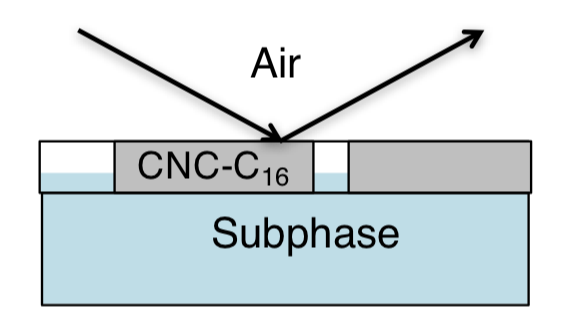Modifying the contact angle of anisotropic cellulose nanocrystals: Effect on interfacial rheology and structure
Cellulose nanocrystals (CNC) are an emerging natural material with the ability to stabilize fluid/fluid interfaces. Native CNC is hydrophilic and does not change the inter- facial tension of the stabilized emulsion or foam system. In this study, rod-like cellulose particles were isolated from hemp and chemically modified to alter their hydrophobicity, i.e. their surface-activity, which was demonstrated by surface tension measurements of the particles at the air/water interface. The build-up and mechanical strength of the interfacial structure was investigated using interfacial shear and dilatational rheometry. In contrast to most particle or protein-based interfacial adsorption layers, we observe in shear flow a Maxwellian behavior instead of a glass-like frequency response. The slow and reversible build-up of the layer and its unique frequency dependence indicate a weakly aggregated system, which depends on the hydrophobicity and, thus, on the contact angle of the CNC particles at the air/water interface. Exposed to dilatational flow the weakly aggregated particles cluster and form compact structures. The inter- facial structure generated by the different flow fields is characterized by the contact angle, immersion depth, and layer roughness obtained by neutron reflectometry with contrast variation while the size and local structural arrangement of the CNC particles was investigated by AFM imaging.
